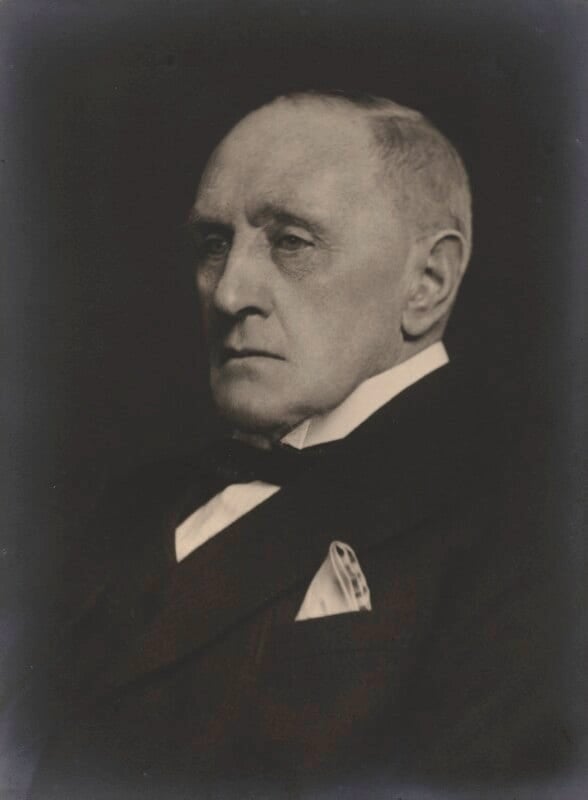
Photograph of Walter Tapper by Walter Stoneman, © National Portrait Gallery London (NPG x185593), by kind permission.
Born in Devonshire in the pretty market town of Bovey Tracey, Walter John Tapper trained just a few miles away in Newton Abbot with Joseph William Rowell (c. 1826-1902). He must have been both ambitious and promising, because at the age of twenty-one he became an assistant to the important Victorian architect, Basil Champneys. He next entered the office of G.F. Bodley and Thomas Garner, rising to become the partnership's chief assistant and then manager. Early in this period, at the rather early age of twenty-four, he married Catherine Jotcham, a young woman working at Watts & Co., the decorative arts company founded by Bodley and Garner with George Gilbert Scott. The couple's son Michael (1886-1963) was born soon afterwards, and their daughter Kathleen three years later. Even though he set up practice on his own account in 1893, he carried on working with Bodley and Garner until the end of the century. By then he had gone into partnership with J. L. Davenport (one of the Watts partners); in 1920, he took his own son into partnership.
Since Tupper's independent work started late, he is generally considered an architect of the Edwardian or early twentieth- rather than nineteenth-century. But he carried Bodley's principles into his own practice, in that sense continuing the values of the Victorians, both as regards Ruskinian ideals, a preference for Gothic Revival architecture, and a belief in the importance of arts and crafts — he was a prominent member of the Art Workers Guild. From the outset, he commanded respect and indeed admiration, soon emerging as an important figure in the profession. Appointments to Surveyor of the fabric of York Minister, and then Westminster Abbey, as well as commissions to build or restore many individual churches, country houses and so on, now marked the rise from his humble rural beginnings to Presidency of the Royal Institute of British Architects (1927-29); election as a Royal Academician in 1935; and a knighthood that same year. He died soon afterwards. His funeral at Westminster Abbey was a grand affair, and he was laid to rest in the Abbey's West Cloister. — Jacqueline Banerjee
Biographical Material
Works
Bibliography
Dawber, Guy E. "Obituary: Sir Walter Tapper, RA, KCVO, FSA, P-PRIBA." Journal of the Royal Institute of British Architects, Vol. 41 (12 October 1935): 1157-58. Internet Archive. Web. 1 September 2025.
Gray, Alexander Stuart. Edwardian Architecture: A Biographical Dictionary. London: Duckworth, 1985. https://www.sir-walter-tapper-churches.co.uk/TapperBioLifeWork.asp
Sir Walter John Tapper. National Portrait Gallery 31 August 2025.
"Tapper, Walter John (1861-1935)." Biographical Dictionary of British and Irish Architects 1800-1950. From Gothic Revival to the New Brutalism. AHRnet. https://architecture.arthistoryresearch.net/architects/tapper-walter-john.
Whitehead, John. Sir Walter Tapper and His Churches. https://www.sir-walter-tapper-churches.co.uk/
Created 30 August 2025